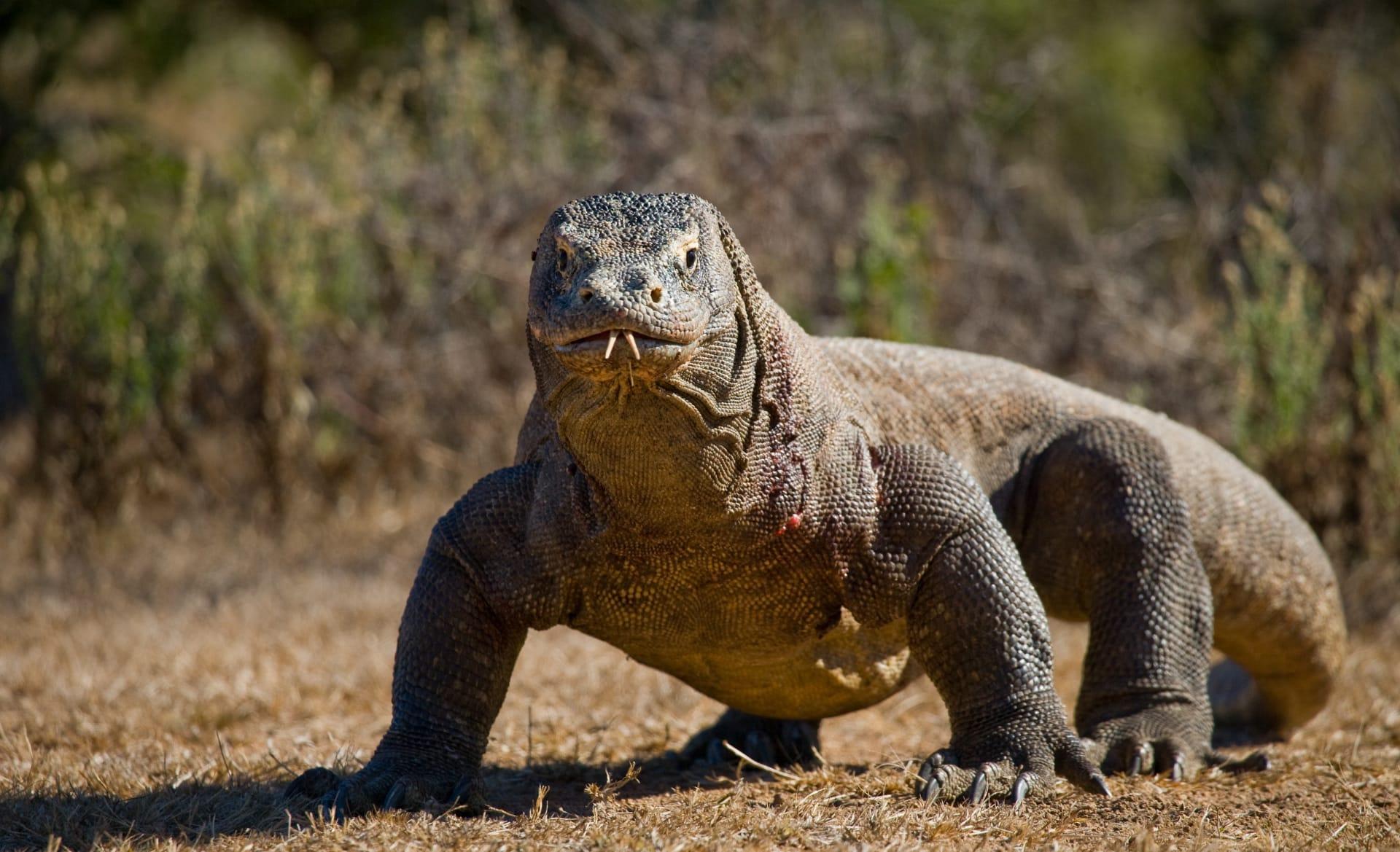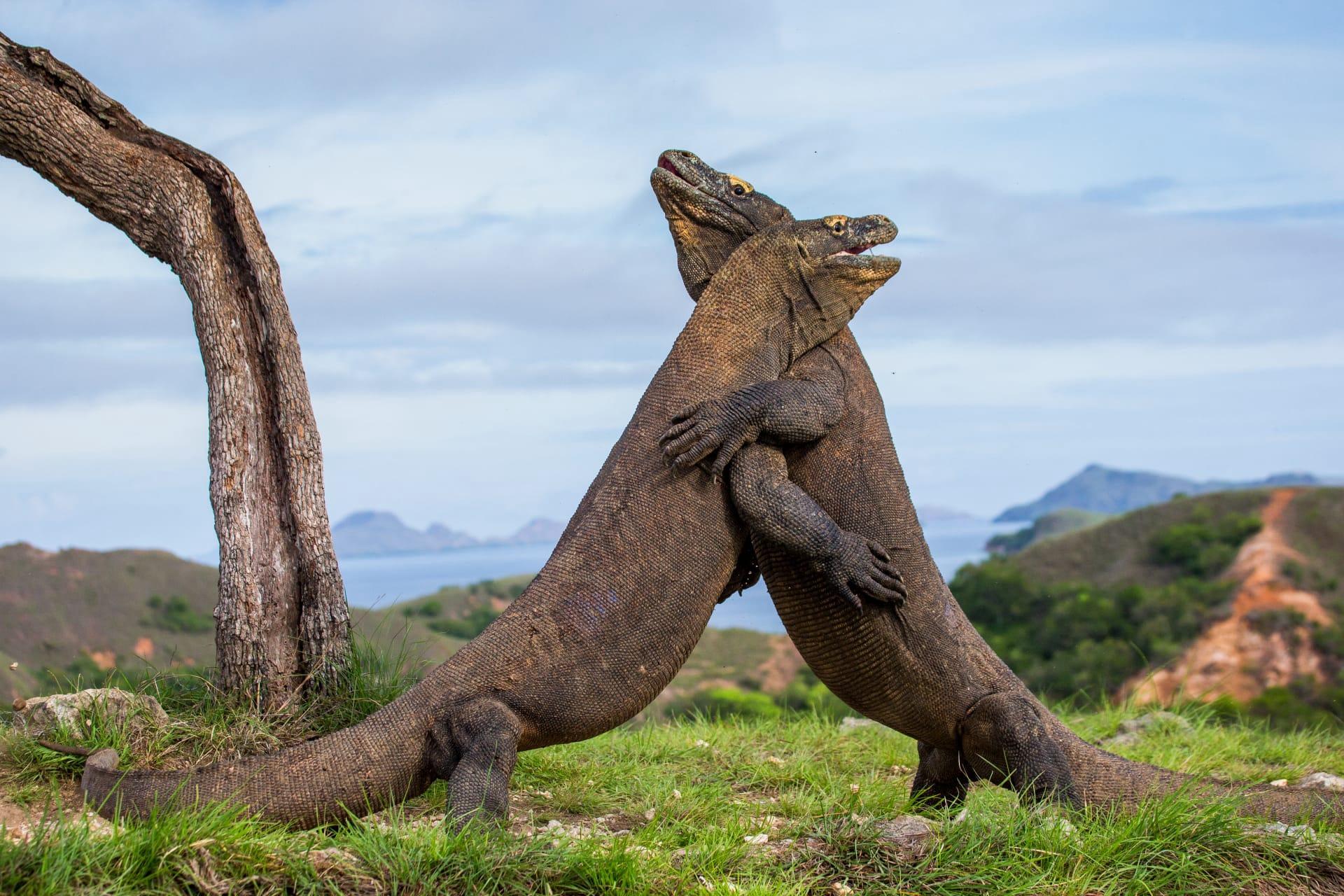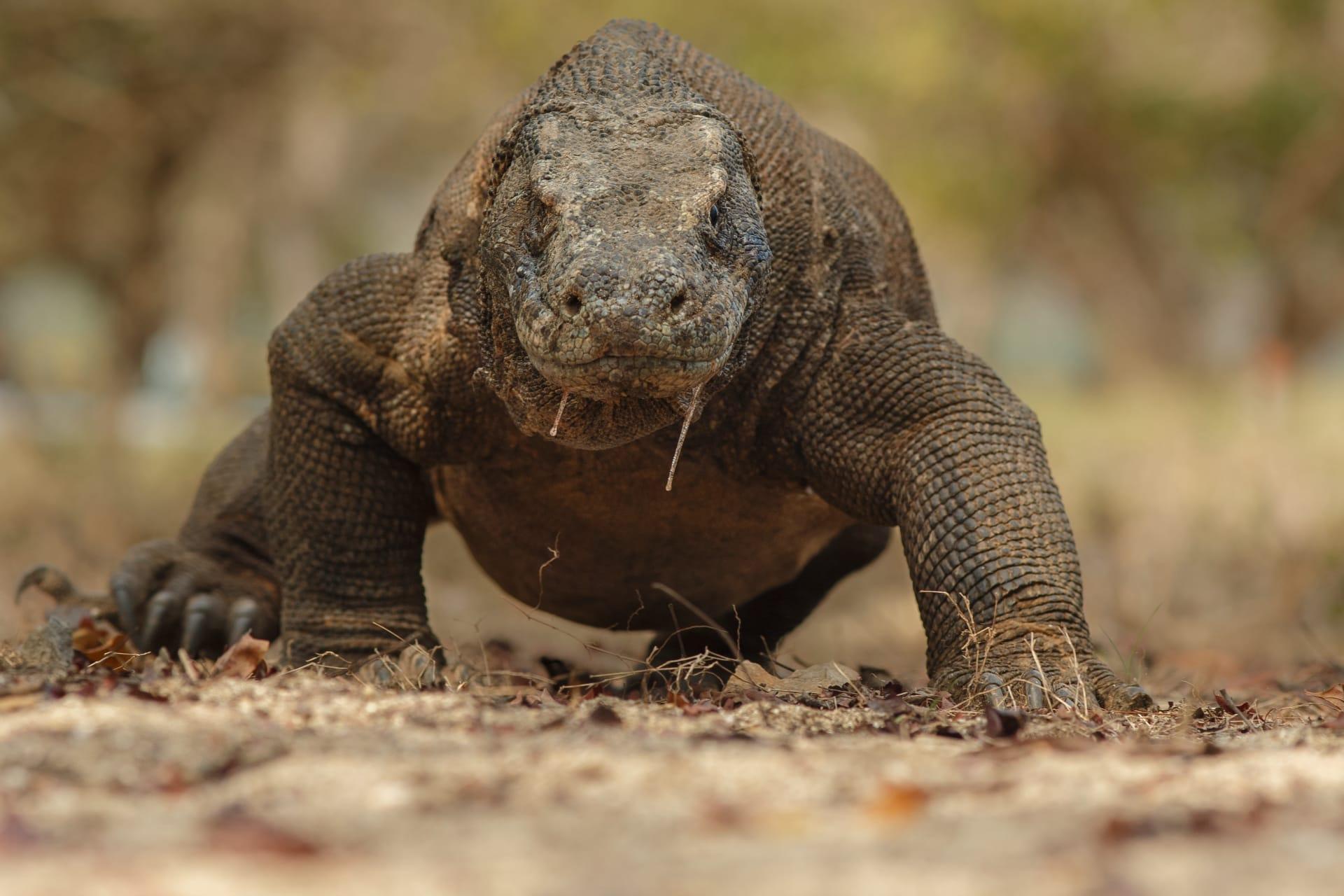Komodo Dragon Characteristics
- Home /
- Mini Encyclopedia /
- Animal /
- Komodo Dragon Characteristics
1
Komodo dragons, the largest living species of lizard, are formidable creatures. Adults can grow up to 10 feet (about 3 meters) in length and weigh around 150 pounds (about 68 kilograms). Their lifespan is impressive too, living up to 30 years in the wild. One of their most notable physical features is their robust and muscular tail, which is almost as long as their body.
The most extraordinary organ of the Komodo dragon is its complex and powerful saliva glands. These glands produce venom that can cause shock, lower blood pressure, and increase bleeding in their prey. This venom, combined with their sharp, serrated teeth, makes them efficient and deadly hunters.

2
Question: What do Komodo dragons eat?
Answer: Komodo dragons are apex predators and scavengers. Their diet primarily consists of carrion, deer, pigs, and smaller dragons. They have also been known to eat large water buffalo and humans. Young Komodos tend to eat insects, eggs, geckos, and small mammals. Their hunting strategy involves ambushing prey and using their powerful bite, laced with venom, to incapacitate or kill.

3
Komodo dragons are not only powerful but also surprisingly swift for their size. They can run briefly up to speeds of 12 to 13 miles per hour (around 20 kilometers per hour), which is quite fast for a reptile of their size. However, they primarily rely on stealth and power over speed.
In terms of hunting, Komodo dragons use a combination of stealth, strength, and their venomous bite. They have an exceptional sense of smell, using their forked tongues to detect prey from miles away. Once close, they spring a surprise attack, biting the prey and inflicting wounds with their sharp teeth and venom. If the prey escapes, it often succumbs to the venom's effects later, allowing the dragon to track it down.

4
Komodo dragons inhabit the islands of Komodo, Rinca, Flores, Gili Motang, and Padar in Indonesia. These islands offer a dry and hot climate, with savannahs, open grasslands, and a few water sources, which is ideal for the cold-blooded Komodo dragons. They also inhabit forests, beaches, and ridges.
Reproduction in Komodo dragons is fascinating. Females lay about 20 to 30 eggs which they bury in the ground or in abandoned megapode nests. They then guard the eggs for around three months. Interestingly, Komodo dragons exhibit a rare phenomenon called parthenogenesis, where females can produce offspring without male fertilization.

5
Book: "Dragon Songs: Love and Adventure among Crocodiles, Alligators, and Other Dinosaur Relations" by Vladimir Dinets. This book, published in the United States in 2013, offers an enthralling exploration of the lives of large reptiles, including a section on Komodo dragons. Dinets combines personal adventure with scientific insights, providing an engaging view of these magnificent creatures.
Book: "The Last Dragons: Discovering the Secrets of Komodo" by Dick Fry. Published in the UK in the late 1990s, Fry's book delves into the mysterious world of Komodo dragons. Drawing from his experiences in Indonesia, he provides a detailed and captivating account of these creatures' behavior, habitat, and the challenges they face.